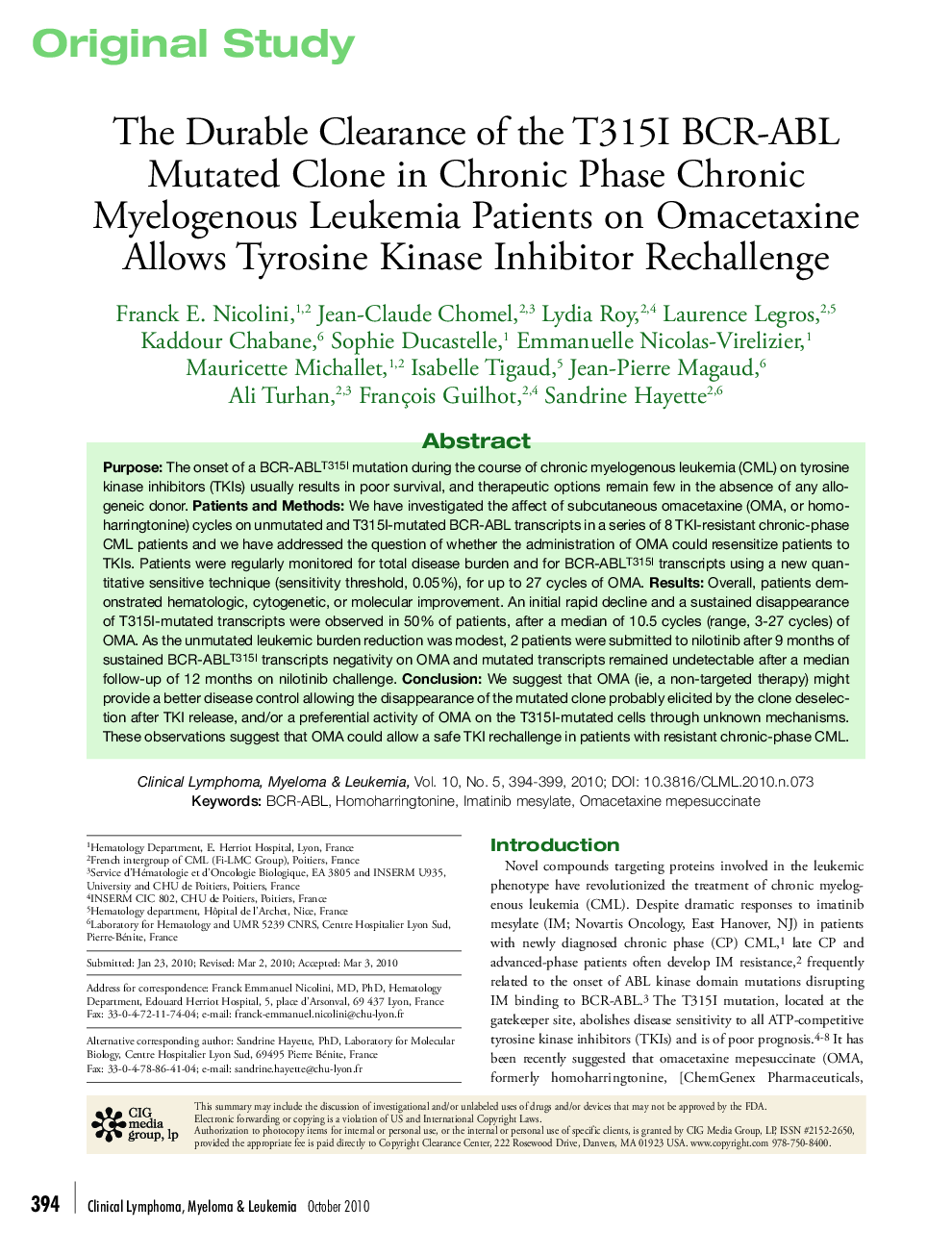| Article ID | Journal | Published Year | Pages | File Type |
|---|---|---|---|---|
| 2755489 | Clinical Lymphoma Myeloma and Leukemia | 2010 | 6 Pages |
PurposeThe onset of a BCR-ABLT315I mutation during the course of chronic myelogenous leukemia (CML) on tyrosine kinase inhibitors (TKIs) usually results in poor survival, and therapeutic options remain few in the absence of any allogeneic donor.Patients and MethodsWe have investigated the affect of subcutaneous omacetaxine (OMA, or homo-harringtonine) cycles on unmutated and T315I-mutated BCR-ABL transcripts in a series of 8 TKI-resistant chronic-phase CML patients and we have addressed the question of whether the administration of OMA could resensitize patients to TKIs. Patients were regularly monitored for total disease burden and for BCR-ABLT315I transcripts using a new quantitative sensitive technique (sensitivity threshold, 0.05%), for up to 27 cycles of OMA.ResultsOverall, patients demonstrated hematologic, cytogenetic, or molecular improvement. An initial rapid decline and a sustained disappearance of T315I-mutated transcripts were observed in 50% of patients, after a median of 10.5 cycles (range, 3–27 cycles) of OMA. As the unmutated leukemic burden reduction was modest, 2 patients were submitted to nilotinib after 9 months of sustained BCR-ABLT315I transcripts negativity on OMA and mutated transcripts remained undetectable after a median follow-up of 12 months on nilotinib challenge.ConclusionWe suggest that OMA (ie, a non-targeted therapy) might provide a better disease control allowing the disappearance of the mutated clone probably elicited by the clone deselection after TKI release, and/or a preferential activity of OMA on the T315I-mutated cells through unknown mechanisms. These observations suggest that OMA could allow a safe TKI rechallenge in patients with resistant chronic-phase CML.
